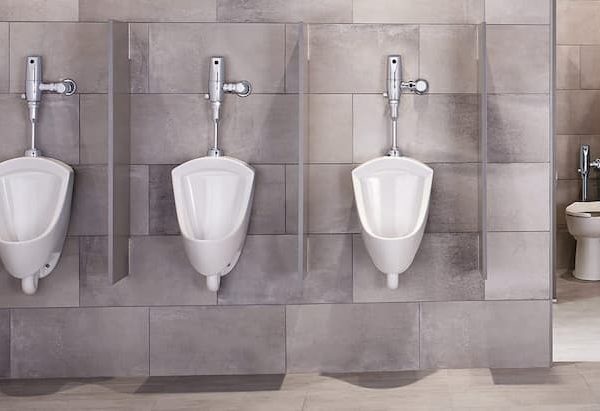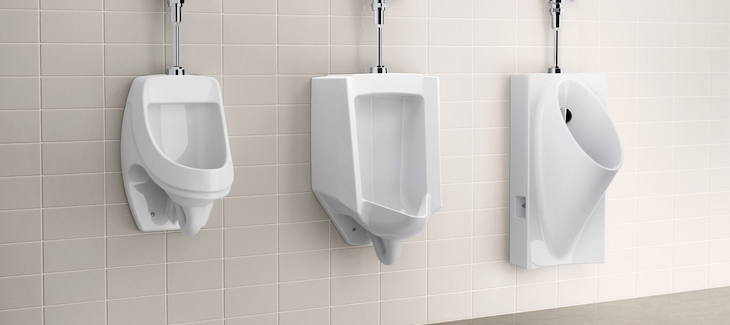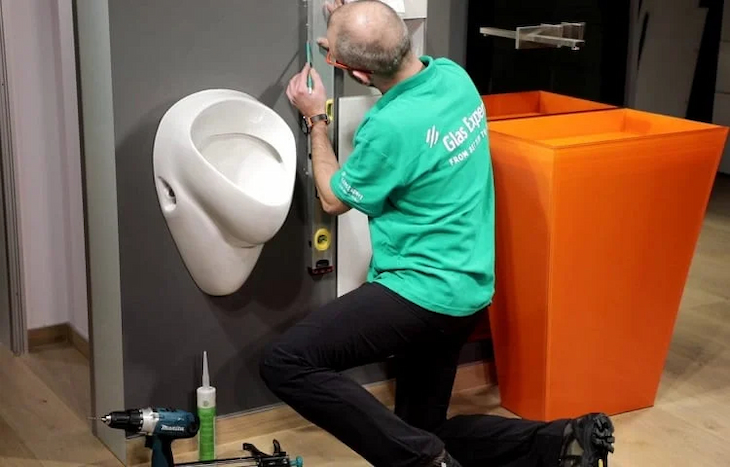23
Feb

When we think of bathroom renovations of any kind, we often overlook the importance of the urinal. It’s easy to see why, as it can appear dull and utilitarian compared to other fixtures such as toilets, tubs and showers. But don’t let the plain looks fool you – they have a lot to offer in terms of improving your bathroom experience.
Whether you’re purchasing a urinal for a commercial organisation or incorporating one into a bathroom remodel, this article will help you understand your options so that you can make an informed choice. Some have greater efficiency, while others have features that enhance your user experience. Read on to learn more about what’s available in the world of urinals.
Prior to making any purchase, you must decide on the optimal urinal toilet for your specified use. In contrast to regular toilets and bidets, there are only a few options available here. To assist you in narrowing down your options, let’s examine the two most prominent alternatives.
The most prevalent choice is the standard flush model. They function similarly to a conventional toilet. Once you have completed your business, you flush the toilet. The release of water when flushing aids in the removal of all “liquid waste” from the bowl and down the drain. Because this is the most prevalent option, you’ll have a broad variety of selections to choose from. This includes designs, styles, finishes, and characteristics.
The benefit of a urinal toilet with a flush that utilises water is that it does not need to be cleaned as frequently as its waterless counterpart. This is because the flushing water will perform the majority of the work. Nevertheless, they must be cleaned and sanitised on a regular basis. This will be the most common choice for many consumers, particularly those purchasing urinals for a commercial location. Not only because there are more choices, but also because there is a feeling of predictability.

Source: pinterest.com
The waterless version is an altogether separate entity. It is sure to arouse your curiosity, since the inquisitive among us may ask how it removes pee without water. It all boils down to its design, really. Instead of releasing a torrent of water into the bowl, the waterless urinal relies on gravity to eliminate all liquid waste.
As with a flushing model or conventional toilet, they are connected to your sewer system, requiring no additional maintenance. They are gaining popularity, particularly for large venues and stadiums, because of their ability to significantly reduce water consumption. Not only does this save a significant deal of money, but it is also fantastic for the environment. A win-win for all parties. The primary disadvantage of waterless urinals is that they must be cleaned and maintained more regularly than other types of urinals. Numerous business owners find cost savings and environmental advantages worthwhile.
Size is one of the most crucial factors to consider during your quest. Despite the fact that one of the most notable advantages of urinals is that they require less room than toilets, they come in a variety of sizes and shapes. Some urinals are rather huge and require a considerable amount of space.
Before even considering your alternatives, it is highly recommended that you take the dimensions of the available area and the distance from your bathroom tapware. You shouldn’t waste time considering urinals that won’t fit. Or, even worse, you may purchase one that you believe to be ideal just to learn that it does not match the room.
If you choose a flush urinal, there are several features and alternatives from which to choose. Similar to toilets, many urinals feature a handle or lever that can be used to manually flush the device after use.
For consumers who prefer a more hygienic approach, you can provide options without flush handles. These have either a sensor that detects when a user is finished and flushes automatically or a timer that flushes the urinal at predetermined intervals. If you’re purchasing a model for a commercial bathroom, these alternatives can help keep your urinals cleaner, making your cleaning staff’s job easier, and provide your users with peace of mind that they won’t be exposed to pathogens while touching the lever to flush.
Urinals are available in a broad variety of forms and styles, so if the aesthetic appeal is important to you, you have many alternatives. Perhaps you desire a wall-mounted, basic design that complements the contemporary style of your bathroom. Or perhaps you simply desire a floor-mounted version or a huge trough that “improves the aim” of its users. Perhaps you are primarily concerned with functionality and have little regard for aesthetics.
Obviously, beauty is subjective, so if you care about how great your new urinal will appear in the area, you should spend some time perusing your alternatives and determining which you like.

Source: bomisch.com
There are a variety of urinal installation choices, similar to those for toilets. These include wall-mount and floor-mount, and each has its own advantages and disadvantages.
Wall-Mounted — The most typical choice, these are mounted directly to the wall, allowing a little amount of floor space.
Floor-Mounted — These are mounted on the ground, but are intended to extend up the wall. The drain remains at ground level.
If you are replacing existing urinals, it will be easier to install the same type that was previously installed, since you will not have to modify the piping connection. It is commonly believed that waterless versions are easier to install than flushing ones, although this is not always the case.